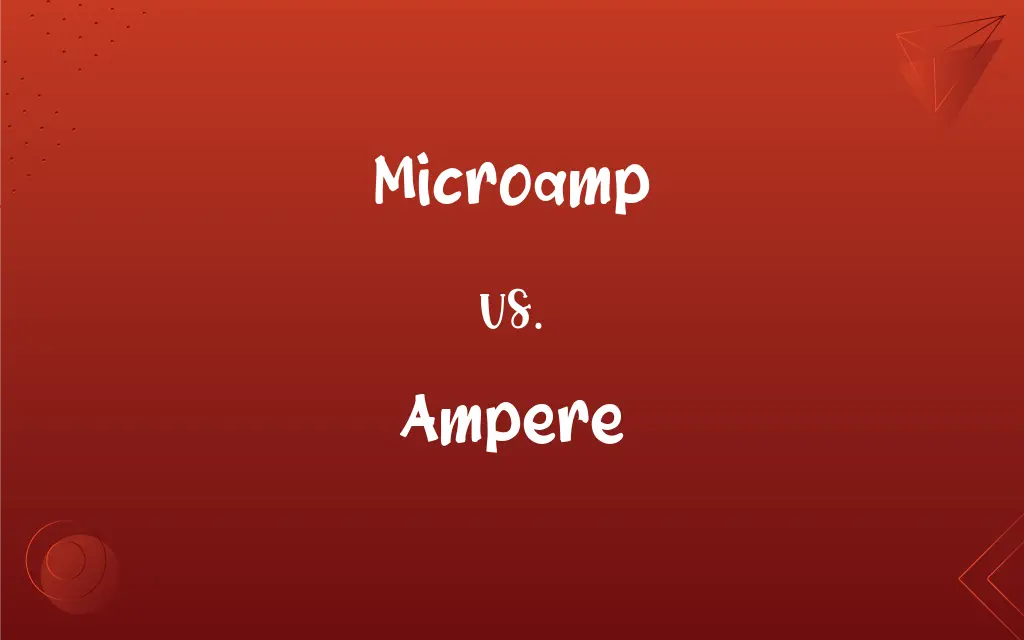Microamp vs. Ampere: What's the Difference?

Microamp and Ampere Definitions
Microamp
One millionth (10-6) of an ampere, abbreviated as µA.
Ampere
The basic unit of electric current, equal to one coulomb per second and equivalent to the current, flowing in two straight parallel wires of negligible cross section separated by a distance of one meter, that produces a force between the wires of 2.0 × 10-7 newtons per meter of length. The value of an ampere in the International System differs very slightly from that in the meter-kilogram-second-ampere system of units. See Table at measurement.
Ampere
A unit of electrical current, the standard base unit in the International System of Units; colloquially amp. Abbreviation: amp, Symbol: A
Definition: The ampere, symbol A, is the SI unit of electric current. It is defined by taking the fixed numerical value of the elementary charge e to be 1.602
X 10−19 when expressed in the unit C, which is equal to A
S, where the second is defined in terms of ΔνCs. ([https://www.bipm.org/en/si-base-units/ampere The International Bureau of Weights and Measures])
Ampere
The unit of electric current; - defined by the International Electrical Congress in 1893 and by U. S. Statute as, one tenth of the unit of current of the C. G. S. system of electro-magnetic units, or the practical equivalent of the unvarying current which, when passed through a standard solution of nitrate of silver in water, deposits silver at the rate of 0.001118 grams per second. Called also the international ampère.
Ampere
A former unit of electric current (slightly smaller than the SI ampere)
ADVERTISEMENT
Ampere
The basic unit of electric current adopted under the Systeme International d'Unites;
A typical household circuit carries 15 to 50 amps







































































